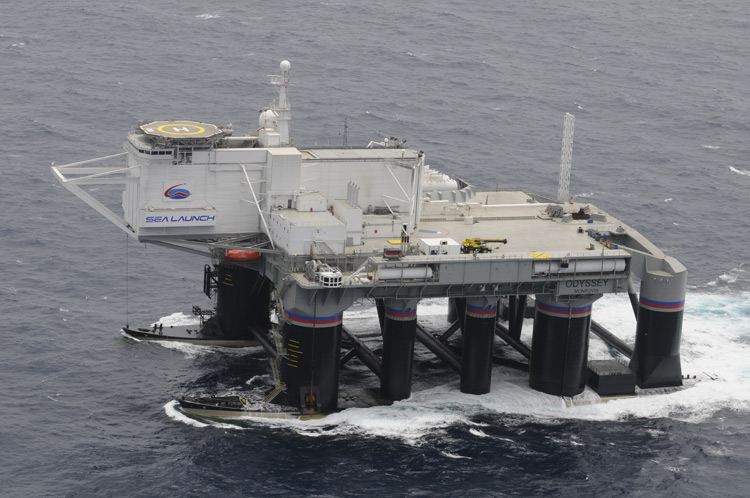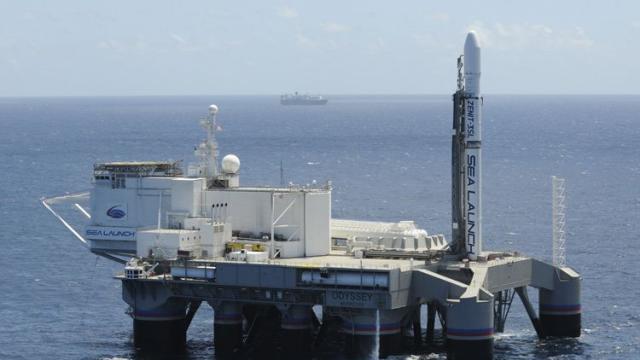When it comes to orbital launch positioning, the Earth has something of a sweet spot: the equator. Like a gigantic planetary baseball bat, rockets jump off the Earth’s centre-line with ease, able to enter geostationary orbits using a fraction of the energy required anywhere else on the planet.
But the problem is that there isn’t a whole lot of usable land along the equator — so one enterprising consortium has found a way to bring the land with it, so to speak, and launch rockets from the middle of the ocean.

Since the Earth’s rotational speed is greatest at the equator (like the weight at the end of an angular-spinning string) it provides an extra bit of boost to the launch. Additionally, the phase change necessary to place an object in geosynchronous orbit around the equator is effectively reduced to zero. Since the spacecraft doesn’t have to expend any extra energy to get into position over the equator, Sea Launch can replace the fuel needed for those manoeuvres with 17.5-25 per cent more cargo. And, in an industry where an extra ounce of cargo can cost an extra $US10,000 or more, 25 per cent more stuff for free is a huge deal.
What’s more, since the equator is equidistant from both poles, it is equally capable of launching items into orbit in both hemispheres, something that launch sites like Cape Canaveral, which is 28.5 degrees North, cannot offer.

There’s also the matter of safety. Since these rockets are launched from the middle of the ocean, even if they do fail — as three have over the course of 31 launches since 1999 — there’s practically zero chance of debris hitting a populated area. Nor is there any significant risk of interference from shipping or airline traffic.
The Sea Launch Zenit-3SL launch system itself is comprised of three parts: the Rocket Segment, the Marine Segment, and the Home Port Segment. The Rocket Segment is made up of the launch vehicle itself — a 60m long, 4m wide rocket capable of putting up to 5000kg of cargo into orbit thanks to a 7.1NM first-stage RD-171 Zenit rocket motor.

The Marine Segment is comprised of two parts: the Sea Launch Commander and the Launch Platform Odyssey. The Commander acts as the mother ship/command station, measures 180m long and 30m wide with a crew of 240. The Odyssey, on the other hand, is a modified, self-propelled oil rig capable of stabilising itself in high seas and holding a GPS-guided stationary position on the open ocean. The two vessels communicate via a dedicated radio link wherein the entirety of the platform’s operations are controllable from the Commander, making the Odyssey one of the largest radio controlled vehicles on the planet.
Both the Commander and the Odyssey, operate out of the Home Port segment, located in Long Beach, California. This 17-acre site houses all of the operational and logistics facilities, including payload processing, fuelling equipment, tracking and communications suites — everything needed to put cargo into space.

While sea launches are relatively rare compared to land-based launches, a number of major companies, including EchoStar, DirecTV, XM Satellite Radio, PanAmSat and Thuraya, have employed the service. And, with NASA budgets continuing to shrink, commercial launch ventures like this will have to step in if we want to keep enjoying the location-finding abilities geosynchronous satellites provide us. [Wiki – Sea Launch – Boeing]
